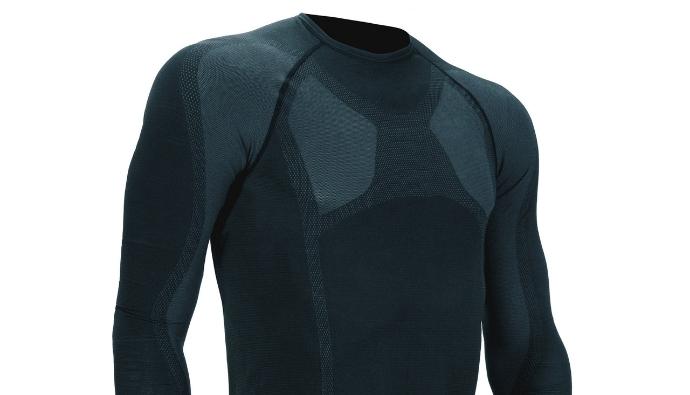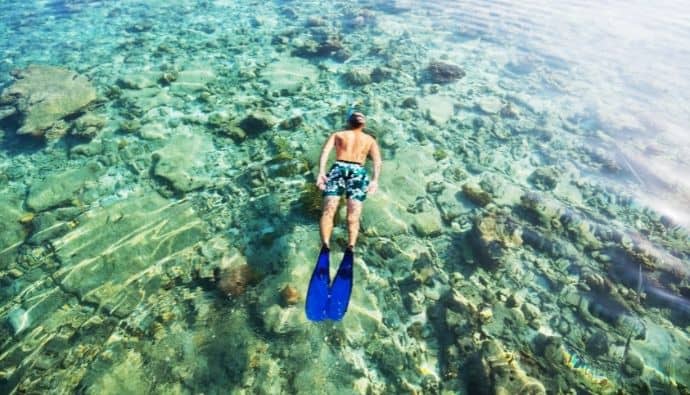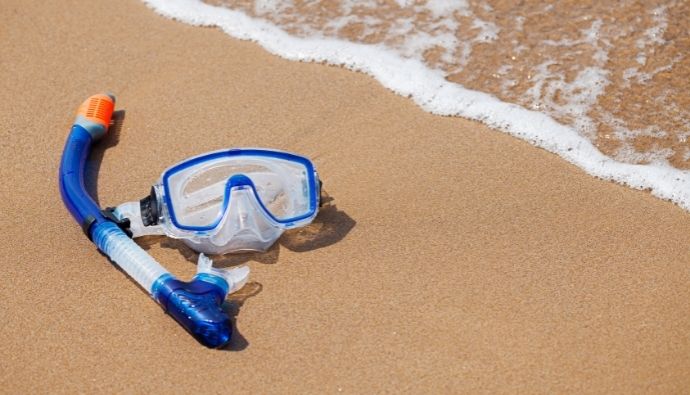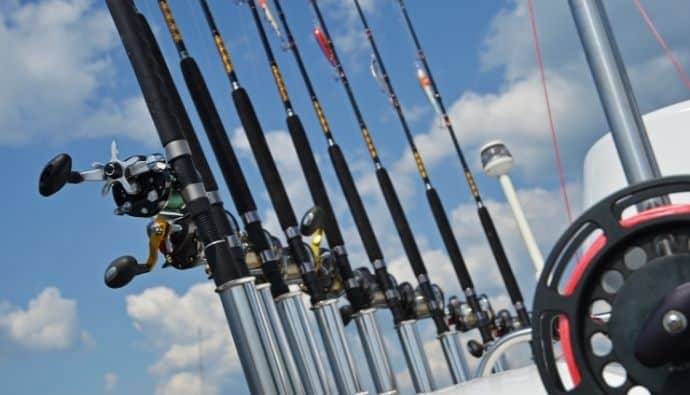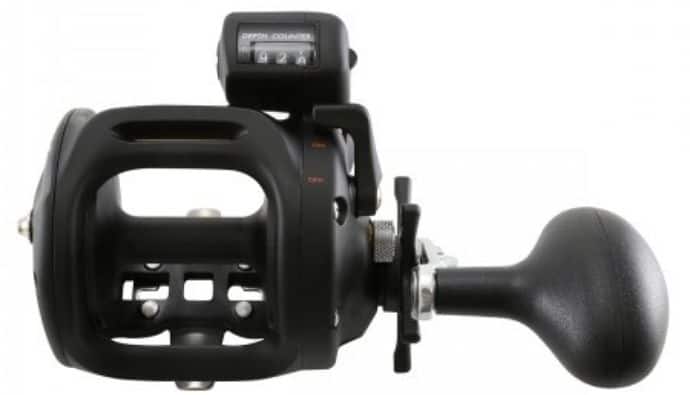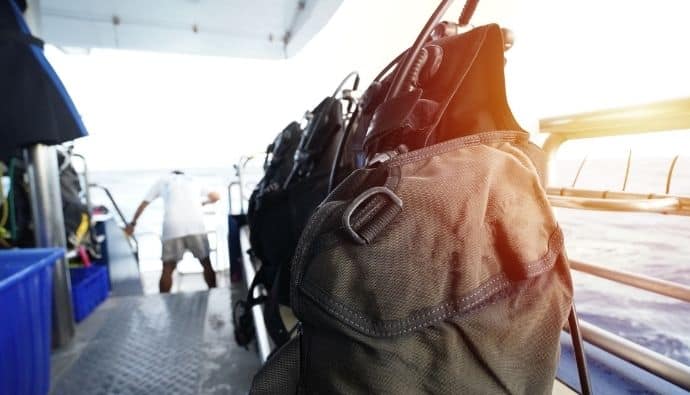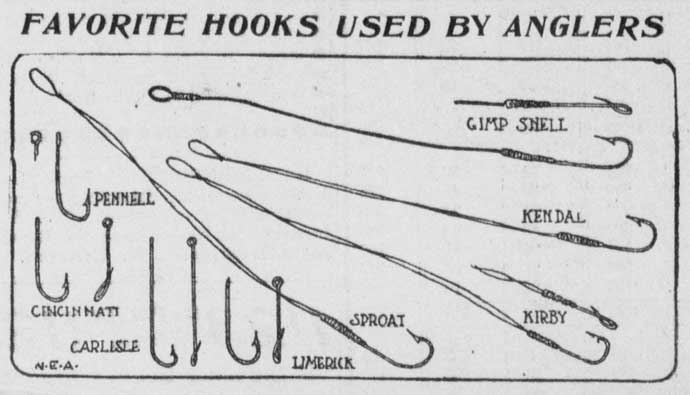Freediving watches are essential for freedivers and spearos, offering added smarts while you dive. These specialized timepieces track your dive intervals, surface time, and other critical data, helping to minimize the risk of shallow water blackouts and ensure your safety while exploring the depths.
This comprehensive guide will dive into the best freediving watches on the market this year. We’ve carefully selected top-quality watches that provide valuable information and boast durability, accuracy, and user-friendly features. Whether you’re a seasoned freediver or just starting your underwater journey, these watches will be reliable companions during your aquatic explorations.
Top Freediving Watches
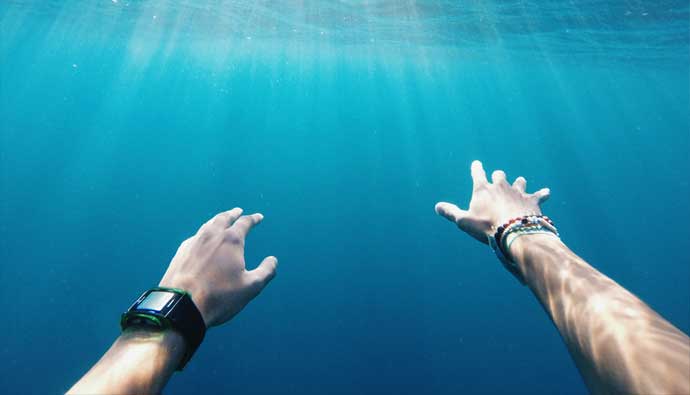
10 Best Freediving Watch Reviewed
- Garmin MK2
- Suunto D4F Freediver Computer
- Omer UP-X1 Freediving Computer with Heart Rate Monitor
- Mares Smart Wrist Dive Computer
- Oceanic F10 Freediving Watch
- Suunto Zoop Novo
- Oceanic GEO 2.0 Wrist Computer
- Tusa Talis
- SEAC Partner Freediving Computer
- Pyle Dive Watch
1. Garmin MK2
Best Freediving Watch
Key Features:
- Advanced training features
- Contactless payment
- Music storage with a premium streaming service
- Smart notifications for calls
- Texts and calendar alerts
- Multiple sports app
- Enhanced wrist-based heart rate estimates
- Long battery life
- Reviews up to 200 dives from your wrist
If you’re looking for the best of the best, then this is your dive watch. Not only does it work well for freediving, but also for any other water sport you can think of. It’s packed with features that will help you train more effectively and even has a music player so you can listen to your favorite tunes underwater.
The Garmin MK2 is also one of the most stylish freediving watches with an elegant yet rugged design. You can review your dive history on the watch itself or connect it to your computer to get a more detailed analysis.
The battery life is impressive, lasting up to 15 hours in GPS mode or 16 days in watch mode.
2. Suunto D4F Freediver Computer
Key Features:
- Apnea timer
- Lightweight
- Ideal for freediving, snorkeling, and spearfishing
- Maximum depth of 100m
- It includes a Suunto logo sticker, quick guide, elastomer strap, scratch guards, and more.
We know that not everyone needs the top-of-the-line, so if you’re looking for a dive watch that can work for freediving and scuba without breaking the bank, this is the watch for you. It’s slick enough to wear around town, but where it excels is underwater.
It has an innovative apnea timer, can do both air/nitrox modes for you divers out there, and can be upgraded as Suunto comes out with further firmware updates.
Suunto D4F Freediver Computer can be completely personalized for whatever alarms, timers, and functions you need it to deliver. Best of all, it can hook up to your computer so you can look at the data!
It’s worth consideration!
3. Omer UP-X1 Freediving Computer with Heart Rate Monitor
Best Freediving Watch With Heart Monitor
Key Features:
- Designed by MOMO design
- Carbon fiber face ring
- Four-button function
- Six screen modes
- Heart rate monitor compatibility
This is a stylish watch that is meant for the hardest of freedivers. It was designed by MOMO Design in collaboration with Umberto Pelizzari. It has a beautiful carbon fiber face and comes with a visible screen both above and under the water.
It can hold up to 250 dives and has a maximum dive and surface time of nearly 100 minutes. It can also switch between sea and lake if you like to dive fresh and saltwater. It’s a popular watch in the freediving community and is meant for those trying to reach their deepest dives.
If you want to see how efficient you are underwater, you’ll need this watch as it also monitors your heart rate.
4. Mares Smart Wrist Dive Computer
Key Features:
- Super sharp and clear display
- Segment display
- Mineral glass display
- Perfect ergonomics
- User-friendliness
- Software upgradeability
The first thing that stands out about this freediving watch is the large bright screen. Couple that with the bright-colored band, and you have one of the most stylish and easy-to-read watches on the market today.
You won’t have to worry about breaking the screen as they use a mineral glass that will stand up to the drops and beating you throw at it.
People have complained a bit the alarms are a bit low in volume, so we brought it down a bit in the rankings, but if you have good hearing, it shouldn’t be a problem. With their support system always on call, this watch is a solid buy if you have any questions or concerns.
5. Oceanic F10 Freediving Watch
Best Spearfishing Watch
Key Features:
- Audible alarms
- LED brightness
- The depth and temperature measurement
- Elapsed dive time
Freedivers designed the Oceanic F10 for freedivers. It has many freediving-specific features, including a number of alarms. It’s ideally suited for all types of breath-hold diving, spearfishing, or freediving, from recreational to competitive.
The alarms are audible and visible, so you’ll never miss one. The LED can be set to low, medium, or high, depending on the situation. We love that they include depth, temperature measurement, and elapsed dive time.
The Oceanic F10 is a solid buy for its price point since it’s the size of a normal wristwatch which is very convenient. This watch has everything a freediver needs and more.
6. Suunto Zoop Novo
Key Features:
- It has air, gauge, nitrox, and freedom operating modes
- Imperial or metric programmable
- Decompression stop data
- Audible alarms
- Back lite display
- Maximum depth display of 100m
The Suunto Zoop Novo is a great freediving watch choice for both beginner and experienced freedivers. It is simple and easy to use with its four operating modes; air, gauge, nitrox, and freedom.
This watch is also programmable in either imperial or metric units, making it versatile for freedivers of all backgrounds. It has a simple and friendly interface. The screen is easy to read.
It beeps at you if you ascend too quickly and beeps at you if you are about to pass no decompression bottom time.
The backlit display ensures you can always see your depth, even in low light or night conditions. And finally, the maximum depth display of 100m is perfect for freedivers who want to track their progress over time.
7. Oceanic GEO 2.0 Wrist Computer
Key Features:
- Data retention
- Displays minutes and seconds
- User-friendly interface
- AHs four operating modes
- Audible alarm
- Flashing LED light
This wrist computer might be the steal of the group since you can use it for both scuba and freediving, and it comes at an affordable price. It can track 99 freedives, which is more than enough even for the longest trip you’re taking spearfishing or out with your friends.
It works down to 330 feet, in case you want to push the limits to the max. The screen is super sharp and clean, which makes it easy to read. If you’re planning to use this watch with nitrox, know that it’s a bit finicky with entering your mixtures.
Don’t bother with the instructions as they don’t provide much help. Either check out a video on YouTube or have patience as you figure it out with trial and error.
8. Tusa Talis
Best Value
Key Features:
- Employs AA Buhlmann ZHL-16C decompression algorithm
- Audible alarm
- LED-backlit display with step-back feature
- User-replaceable battery
- Air, nitrox, gauge, free dive, and watch operating modes
- Programmable mixed gas dive computer doubles as a wristwatch
TUSA has done a great job on the IQ-1201 TALIS. It comes with an advanced 2-gas watch computer. TUSA has been in the business for a long time, so they know what freedivers want and need.
This freediving watch employs the AA Buhlmann ZHL-16C decompression algorithm. So it’s safe to use, and you can trust the numbers. The audible alarm is great. You can set it to beep at different depths or time intervals.
The LED-backlit display is awesome. It has a step-back feature, so you can easily see all the information without scrolling through different screens. And the best part is that the battery is user-replaceable.
So you don’t have to send it back to the company every time it runs out of juice. The TALIS also has different operating modes: air, nitrox, gauge, free dive, and watch. So you can use it as a regular watch when you’re not diving.
9. SEAC Partner Freediving Computer
Best Freediving Watch for Beginners
Key Features:
- Stopwatch and countdown function
- Records your freediving session up to 99 dives
- It works with a standard CR2032 battery and is 100 mt water resistant
- Backlit display
This is the dive watch I like to use because it’s low-cost and takes care of all the basic functions I’m looking for in a freediving watch. Although I have my PADI certification, the truth is I don’t go out scuba diving nearly enough to justify grabbing a full-blown dive computer.
This watch isn’t super bulky, which makes it nice to wear out in public. Sometimes you can get it on sale for under $100, and that puts it in the category of one of the best freediving watches for beginners.
10. Pyle Dive Watch
Best Budget Freediving Watch
Key Features:
- Waterproof design
- Dual time mode
- Underwater dive mode
- Sea or lake diving
- Depth and water temperature display
- EL backlight
The Pyle dive watch is bare-bones. That’s actually why we like it!
If you’re looking for a watch to help you understand your freediving depth range without all the fancy bells and whistles, you should pick up this watch.
It’ll help you better understand how much you’re pushing yourself on each dive. You’ll likely find it easier to just measure your surface time by giving yourself the same or a little more time than your dive time. This is a good beginner watch if you don’t want to spend money on the F10.
Learn More About Diving on the Cast & Spear Podcast
Why Do You Need a Freediving Watch?
Just like a pilot needs a co-pilot, a freediver should have one too. A quality freediving watch will be able to assist you in difficult situations and keep you from doing anything foolish like diving too many times without rest.
When diving, losing track of how deep you go is easy. Leave it up to the dive watch to keep track of this automatically.
I like knowing the temperature when I dive. Maybe it’s the engineer in me, but knowing the different temperatures at different depths is interesting to read during and after uploading the data to my computer.
Also, if I hit a fish at a certain depth, it helps to know what temperature it was caught at so I can update my fishing knowledge bank and compare it to the rule of thumb you find in books or my spearfishing fish guide.
Imagine finding the best fishing spot but never being able to find it again.
You’d be kicking yourself forever!
Not with a dive watch. Many dive watches come with an integrated GPS system. Their GPS can save coordinates and point you in the right direction. You will never lose that fishing spot ever again.
We all hate that alarms are ringing in the morning.
But when you are underwater, a simple alarm ring can save your life. Most dive watches come with an advanced alarm system. Some of them are able to track your oxygen level and alert you when you need to return to the surface or if you should wait a few seconds at a certain depth to decompress.
There are a lot of dive watch brands on the market. This is the time to be a brand snob.
Many brands advertise themselves as good, and some people bite into that. When it comes to your safety underwater, you should always go with the most trusted brands. You are risking your life, and having the best equipment will ensure that every dive you make is successful.
Freediving Watch Features
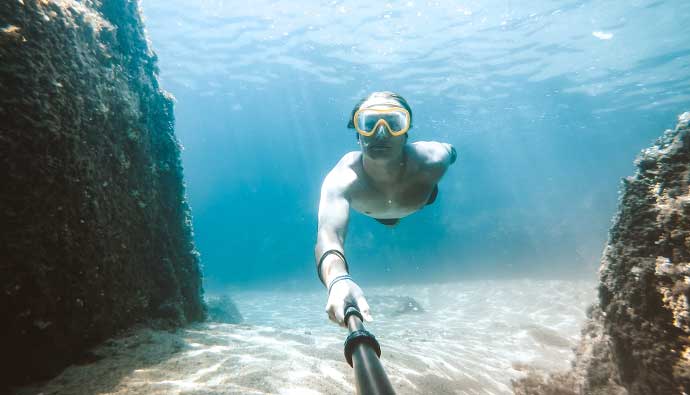
Dive Planning
The period between each dive is known as a surface interval. It is an important aspect that each diver should have in mind. The surface interval represents the period of time in which the diver has to rest before venturing back into the deep.
Diving can be stressful on the body, and a rest period is required between each dive. Keeping track of your dives is important. You must know when to rest. Most dive watches will begin timing the surface interval the moment a diver reaches the surface.
Based on their algorithms, most dive watches will automatically calculate NDL (No-Decompression Limit). But some of them will allow you to enter the values and obtain a personalized result.
It is a requirement for all dive watches to allow you to change the type of water you are diving in. This will allow the watch to calculate the NDL and adjust to the different parameters of the water.
Freshwater and saltwater are different, and they have different parameters. Your dive watch needs to be able to adapt to them to provide you with the correct information.
Depth and Location Tracking
Quality freediving watches need to hold up under pressure, literally. Ensure your dive watch is rated to go beyond the deepest dives you plan to go.
All dive watches come with depth indicators. Those indicators will show you the descend/ascend rate and the current depth you are in. There is also a mode that will display the maximum depth you can descend to.
As the GPS signal doesn’t work underwater, you will have to stay on the surface to record your start and your endpoint. Most watch manufacturers recommend that you raise your hand above the water and wait for the GPS signal to be received by your watch.
Dive Modes
During a single-gas or multi-gas dive, you can view the current dive conditions, the dive compass, and physiological data.
When it comes to a gauge dive, most dive watches will allow you to view the current dive conditions, the dive stopwatch, the dive compass, and heart rate data. Many recreational divers do not use the gauge mode.
During an apnea or apnea hunt dive, the watch will display the current dive conditions, your surface time, details about your last dive, heart rate data, and the map. Usually, those modes are used by freedivers and divers who like to go spearfishing.
Dive Straps
When it comes to dive watches, there are two options available regarding the mounting mechanism. The big majority of dive watches are made to be mounted on your wrist. While others come with a chest mounting mechanism that will attach to your strap or even to your BCD.
Wrist straps are more common and they are easy and cheap to replace if they wear out. Most of them are made out of rubber, a common material used in diving gear.
Extra bells and whistles
Some freediving watches are equipped with a heart rate monitor. Some have it displayed all the time, and some have it displayed only in certain dive modes (gauge mode).
When it comes to the accuracy of the heart rate monitor, the dive watches are accurate since the diver isn’t using their hands to stroke the same way a swimmer does.
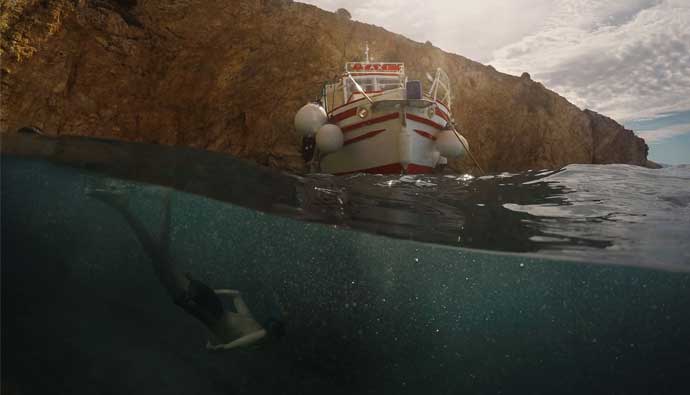
If your freediving watch allows for 3rd party fishing apps, just note that during your dive, they may be restricted since the manufacturers need to make sure they don’t interfere with the critical information you need on your dive.
Finally, most freediving watches are able to sync with your phone or computer. In this way, you will be able to share and back up your dive data between your devices.
Learn More About Diving on the Cast & Spear Podcast
How to Care For Your Freediving Watch?
Battery Care
How often should you charge your dive watch?
A freediving watch should be recharged before every dive. As with other electronic devices that use rechargeable batteries, like our cell phones, you should know that the battery will reduce its capacity to hold a charge over time.
That means that it will start discharging at a much faster rate as time passes. Most dive watches come with replaceable batteries, which can be purchased from the manufacturer. You should only replace your battery when you see signs of it failing (it discharges faster than usual).
When charging your dive watch, it’s a good practice (as with every other electronic device) to unplug it once the battery level is full to avoid damaging the battery.
Charging the Watch
You should only let your dive watch charge until it reaches the full level of the battery. After that, the watch should be disconnected from the charger. Leaving it like that will cause the battery to wear in time.
Usually, a charging cycle should last between 2-5 hours, depending on the watch. The ones with bigger batteries will take longer to charge.
The battery life of your watch depends on its capacity. The bigger the battery, the longer it will last. Usually, they tend to last between 6-12 hours and even longer if not used heavily.
Firmware Updates
Updates are important for every electronic device. Think of your phone. When a new system update comes up, you should take it. It can provide your phone with a lot of new features, and most importantly, it can extend its battery life of it by upgrading the hardware-software connections.
This applies to your dive watch as well. With every new update, you will have more features to enjoy. It is recommended to update it every time it gets a new firmware update.
If you are unfamiliar with that, see it as a replacement part. Like a new air filter on a car. It will increase the car’s performance.
Washing a Freediving Watch After a Dive
You should take care of your dive watch as you do with every other diving equipment. If not taken good care of, in time, it could start to malfunction or just look terrible.
After your dive, you should always rinse your watch with clean water. Doing that will remove the salt that has deposited on its external components. Salt can cause degradation to the band, housing, and backing.
If you only used the watch in the pool, it’s still advised to rinse it with fresh water to remove any chemicals.
All you have to do is to let the watch dry, and it will be ready to follow you on your next adventure.
Freediving Watch Buyer’s Checklist
How many dives do you want to log?
Usually, dive watches come with internal memory for saving your dive information. Some dive watches allow for expansion cards, like microSD cards. If you are a diver that likes to track all their dives, having a watch with bigger storage memory is best.
It’s always recommended to back up your dives on your computer in case you break or lose your watch. It comes down to personal preference on how many dives you choose to log.
What’s the look you want?
When it comes to watches, most of them come in 2 shapes: round and square. This is often a personal preference, but you should choose a watch that is able to display the information in an organized fashion.
Usually, watches with a square screen tend to be more organized than their round counterparts.
What band material do you want?
You don’t want to choose a band that is too stiff or one that may hurt your wrist when you wear it. Most dive watches come with bands made from a polymer.
Some freediving watches come with a metal band, and these need to be sized for your wrist when you purchase them. If you decide to put the metal band over your spearfishing wetsuit, chances are it won’t fit. That’s why it’s preferred to use a non-metallic band.
What size do you want?
The size of the watch usually refers to the size of its screen. The bigger the screen, the more information it will be able to display at once.
It’s annoying to start pressing a button to be able to see the temperature or to switch to the screen that indicates your current depth. A big screen is able to solve that problem.
Keep in mind that the screen is the one that is finishing the battery’s life. A bigger screen will result in shorter battery life. Another important aspect is the visibility of the items on your screen. You should choose a watch with a screen that can clearly display the information.
How much do you want to spend?
Expensive dive watches will come packed with many interesting features and have better build quality than cheaper ones. However, having a cheap freediving watch is better than not having one since they still had to go through a quality control protocol.
Ensure the cheap dive watches have basic functions like surface intervals, a stopwatch, and the ability to track your alarms.
Do Freedivers Need A Freediving Watch?
The short answer is: Yes!
Learn More About Diving on the Cast & Spear Podcast
Frequently Asked Questions
Freediving is breath-hold diving, being in and under the water whilst holding one’s breath. Diving without an aqualung is often referred to as ‘skin diving’ or ‘snorkeling.’ Both can use a mask, snorkel, and freediving fins, but freediving will always involve a breath hold, no matter how deep you go.
Insider Advice
A freediving watch makes the sport safer, and you can rest assured that you’re following the best dive protocols rather than guessing. As renowned physicist Richard Feynman says, “the easiest person to fool is yourself.”
Shallow water blackouts are real, and they can mean the last time you dive…ever.
Any time you hold your breath, you should be watching your CO2 levels. Especially as you get better, the longer you stay down, the more time you need to stay at the surface to bring the level back down.
A good rule of thumb is to stay on the surface at least twice as long as you dove. Therefore, if you dove down for 80 seconds, make sure you stay on the surface for at least 160 seconds or 2.6 minutes.
This could be done using a regular watch, but a freediving watch does it automatically and has other important bells and whistles that will make your dive more enjoyable.
Most of these dive watches include:
Stopwatches – for improving your depth time training.
Depth Alarms – Helps those who are more advanced go down deeper and pay attention since it’s easy to forget the time necessary to come back up. This is critical if you’re going for that big fish stuck in a rock or in the bluewater going after that big tuna.
Time – For keeping track of how long you’ve been in the water.
Backlight – For ease of visibility at depth.
Dive Counter – Keeping track of how many dives you’ve taken. Critical to stay aware of the proper rest needed between dives.
Dive History – Automatically track your dives to improve your times and show off to your friends.
Water Temperature – Know the different gradients of water temperatures. If you get a prized fish at a certain depth, this could also help you when you want to catch another in the future.
GPS – For keeping track of where you are in the water.
Training Mode – For improving your depth time further.
Digital Compasses – Some even come with a digital dive compass.
This might seem like a lot of information, but it’s never a disadvantage in the ocean to have it available and easy to read.
Freediving Watches are Important for Spearos
A freediving watch is a wrist device that gives useful information to the diver. As mentioned above, the best dive watch can provide accurate readings on temperature, pressure, heart rate, depth, and much more.
Your dive watch should be made from quality materials. It must withstand the harsh conditions of ocean water and freshwater if you plan to train in the pool. Brand name freediving watches are important as their reputation is what will guarantee performance when you need it most.
Most newer freediving watches will provide you with GPS positioning, allowing you to know where you are when you surface. This is a great feature, especially if you spearfish, because it helps track the good locations if you stumble upon a great fishing spot.




 Facebook
Facebook YouTube
YouTube


